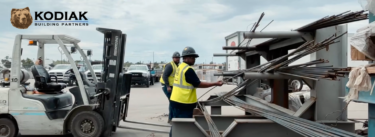Recently I fell prey to rework. Spending days completing a particular piece of work only to realize it was not fit for purpose. I was missing a critical slice of information regarding the customer requirement, and as a result, created something that was not quite right.
Worse still, the work was shipped off to the customer. The resulting rework included fixing what I had done, as well as the damage control to contain the issue and preserve the relationship. That was painful.
In operations, we avoid sending defective work to the next process. It is drilled into us to ensure the quality of our work is up to standard before we release it to the internal or external customer. Or if we find our work to be sub-standard, we panel beat it to shape before passing it on. That’s true for all sorts of process types whether you’re developing new products, making widgets or servicing customers.
It cannot be ignored that the creation of lousy quality has knock-on effects on the customer, the organization and on the individual.
What does poor quality do to the customer?
When we hand sub-par quality over to a customer they don’t thank us for making more work for them. They end up checking incoming work and dealing with the delays as they service their own customers. It takes up their time and effort, and they end up using capacity for something completely avoidable. Handing your customers bad quality not costs them; it also aggravates them.
Customers care only for the product or service they receive. They’re not interested in how much effort it took for you to make it happen or how many times you had to fiddle with it to get it right. They’re also not interested in what it cost you. So, we cannot make our lumpy processes their problem.
Customers have a choice, and they know it. They’re human too and assuming the severity of the inferior quality is not detrimental; they might forgive the first offence. But, if they’re on the receiving end of regular defects and apologies, they’re likely to take their business elsewhere.
Bad quality drives customers into the arms of others.
What does poor quality do to the business?
The undeniable impact is losing face with customers and forfeiting sales. When trust is broken, it’s much harder to win it back. If we don’t actively retain customers (through outstanding quality, excellent service, on-time delivery, the right price, innovative offerings), the financial burden of getting them back is significant.
The less obvious impact is the creation of rogue processes that evolve out of necessity to deal with the defect. No longer are you developing and managing processes to build a product or offer a service. Now you’re developing special methods to check them and fix them too. The more steps in servicing customers and making products, the longer it will take and the more resources you will end up financing.
Our challenge is to build quality in so that quality is assured by the process, not by an army of inspectors, expeditors and fixers.
What does poor quality do to us?
We could become institutionalized. We could become so used to the way things work that we blindly accept poor quality as the norm and do the best we can within the constraints. At first, we may fight it, but if we’re alone in the battle, it’s only a matter of time before we fall in line with the rest of the employees who accept it as normal.
I have seen several companies set-up entire processes (and departments) to deal with work that was not right the first time. What is more surprising is how they view it as a necessary part of the process. They do not see it as waste and go to lengths to fiercely protect it.
“No way is that a waste – we have to do it!”
Once rework becomes a part of standard work, we promote it from waste to ‘value-adding’. The abnormal becomes normal and appears to have belonged there all along.
Poor quality erodes motivation. It’s frustrating to create something only to redo it. When this happens often enough, it’s hard to remain enthusiastic and keep on smiling.
That’s why we have to support people to weed out problems causing instability in the process – creating a stable working environment for good work and good people to flourish. We do this by challenging the current condition:
- What is the purpose of the process?
- What does the standard process look like now?
- What are the wastes? What is causing them?
- How can the they be eradicated?
- What will the improved standard look like?
This is how we help our people understand the baseline and inch through cycles of experiments, improve it to new levels. Less frustrating levels.
Poor quality can keep us quite busy. It may give leaders the impression that productive work is taking place, but once you start to clear one quality issue away at a time, you also begin to clear a view to the critical path. The path that delivers value and delights customers.
Leading a quality improvement movement
If you lead a team and agree that good quality is good for customers, good for business and good for your people, you’re off to a solid start.
If your employees are nervous about exposing quality issues and burn energy hiding problems or fixing them before anyone notices, you have work to do. Building a fearless organization reassures employees that they can safely raise concerns. It opens a dialogue where people talk freely about problems and solve them together.
Your reaction to quality problems will go a long way in creating this culture. Ask yourself:
- How do I react when staff bring me problems?
- How do I react when we’re dealing with the same problems over and over?
- How do my team react to problems?
Poor quality is not okay but provides us with the opportunity to learn and improve. Resist the urge to give in and accept it as the norm and use it to foster a problem-solving culture. If we see it for what it is – unadulterated, annoying, avoidable waste – we can do something about it. Many people will ultimately benefit from this.





